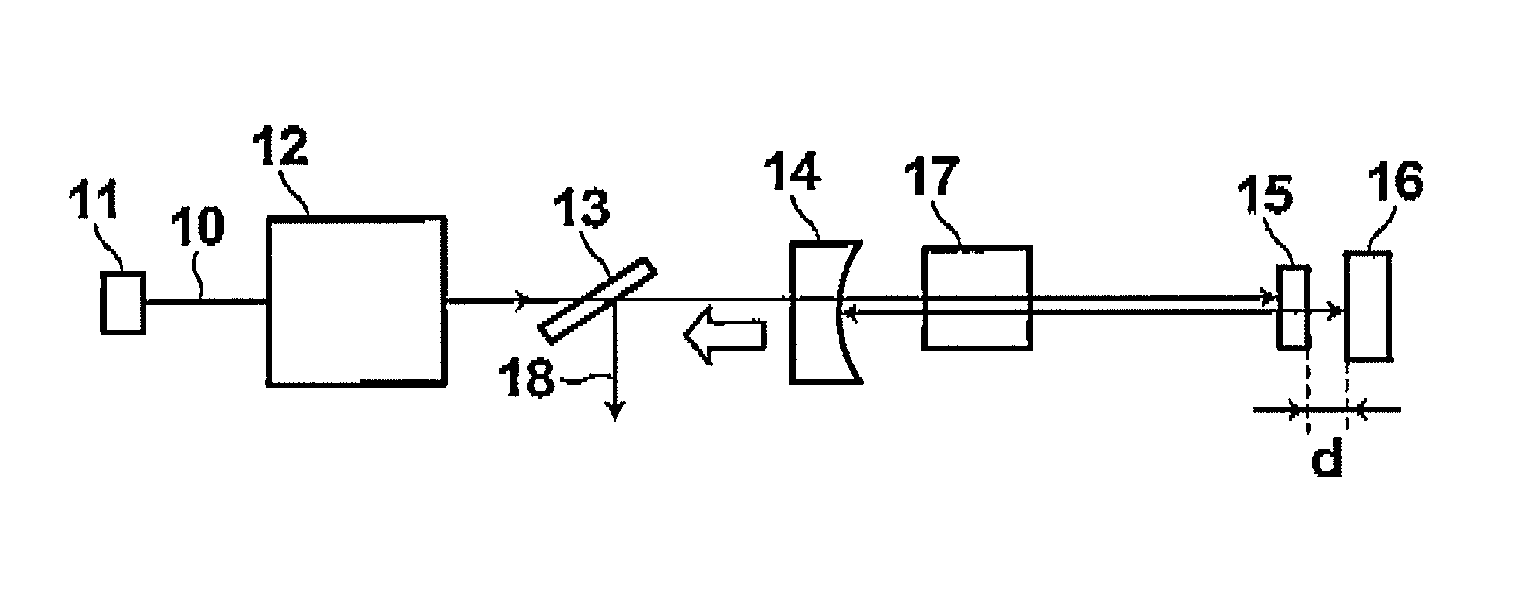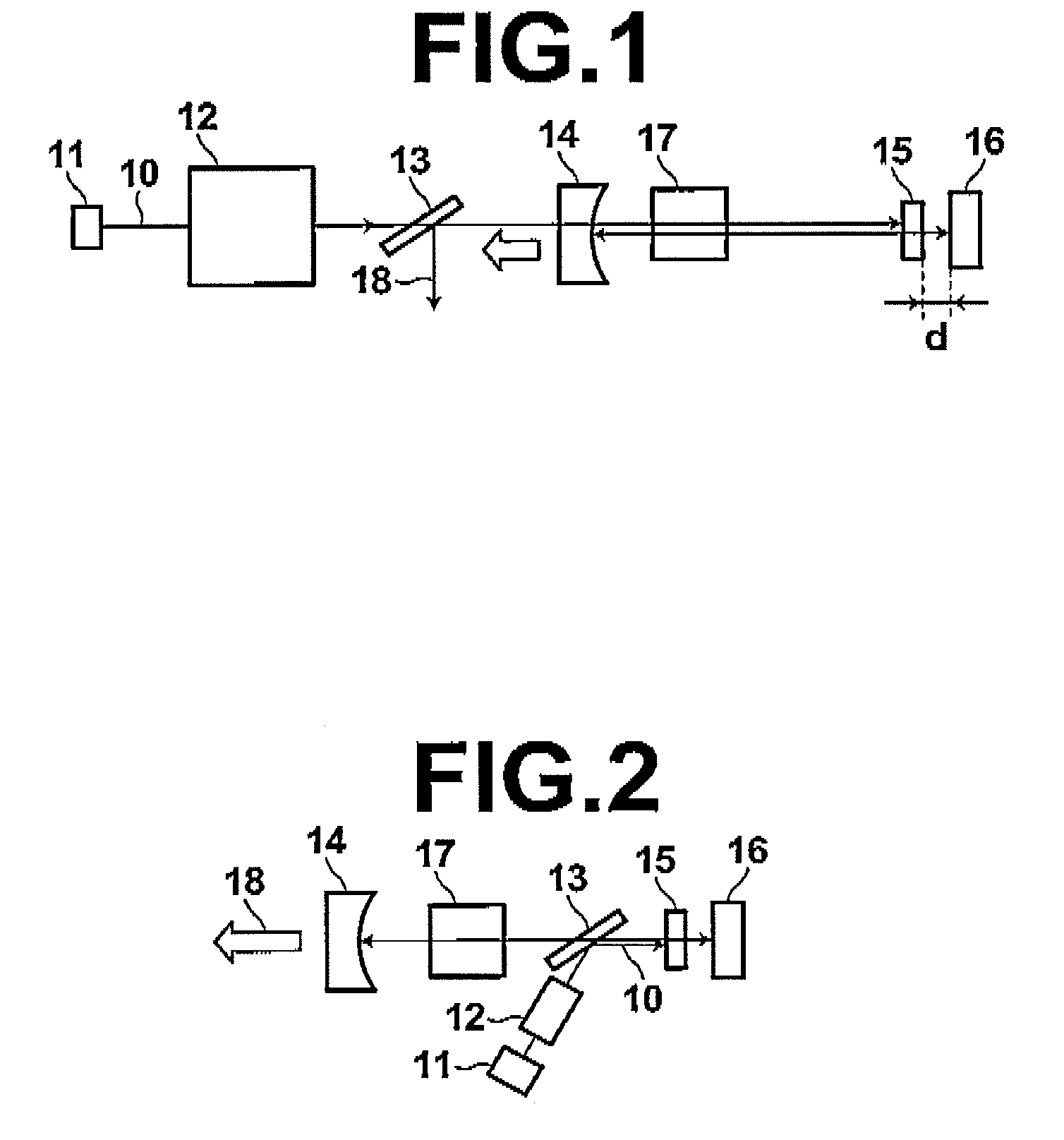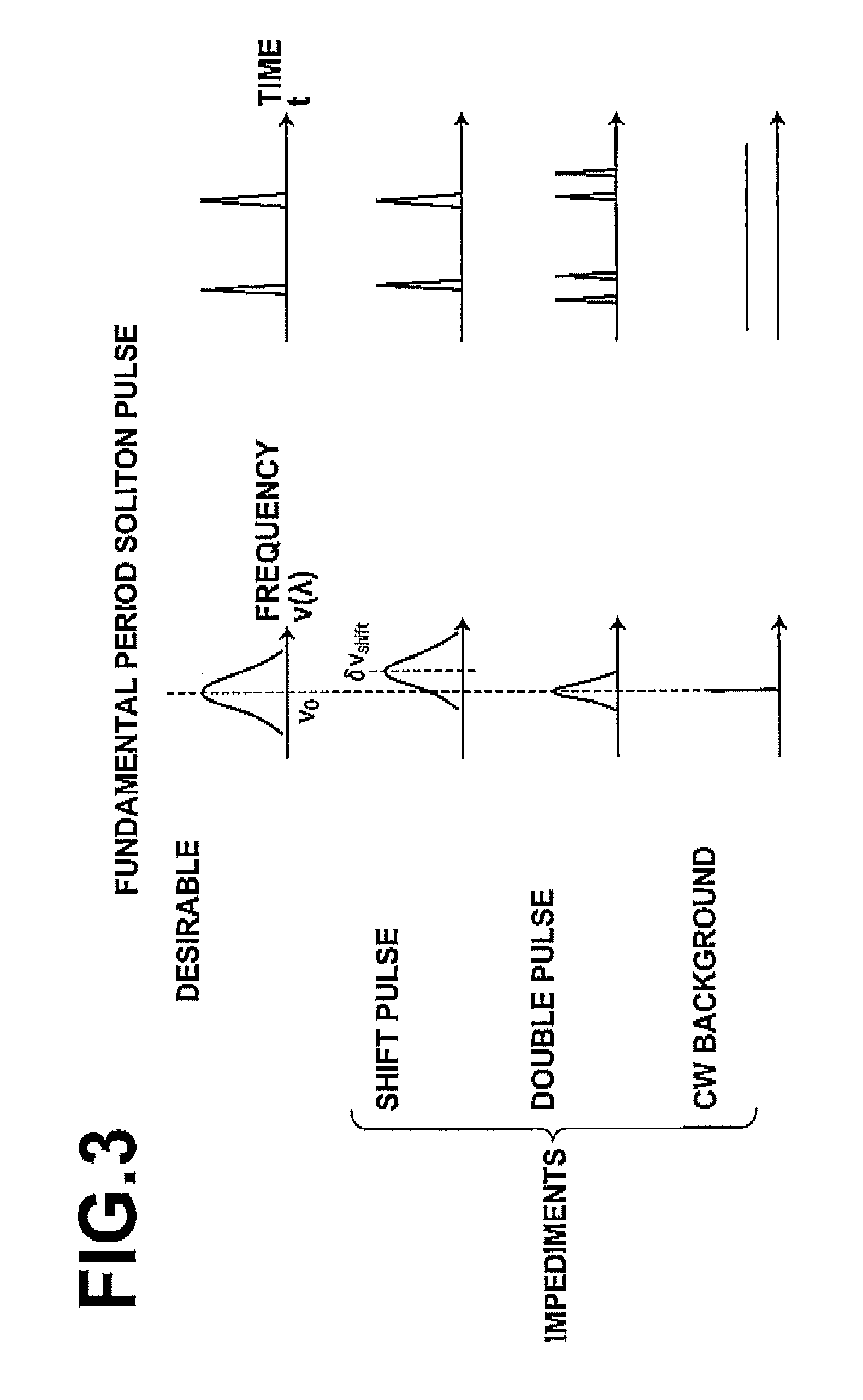Mode-locked solid-state laser apparatus
a laser apparatus and mode-locked technology, applied in the direction of electrical apparatus, laser details, optical resonator shape and construction, etc., can solve the problems of increasing the number of optical components of the mode-locked solid-state laser, the undesirable operation mode, and the increase in the cost of the apparatus, so as to achieve stable soliton mode locking, small and stable cw mode-locked laser, and stable operation.
- Summary
- Abstract
- Description
- Claims
- Application Information
AI Technical Summary
Benefits of technology
Problems solved by technology
Method used
Image
Examples
Embodiment Construction
[0087]Hereinafter, exemplary embodiments of the present invention will be described with reference to the accompanying drawings. FIG. 1 is a schematic side view of a soliton mode-locked solid-state laser apparatus according to an embodiment of the present invention. As illustrated, the mode locked solid-state laser apparatus includes a semiconductor laser 11 that emits excitation light (pumping light) 10, an excitation optical system 12 that inputs the excitation light 10 into a resonator, a dichroic mirror 13 disposed on an extension of the optical axis of a resonator, to be described later, in the subsequent stage of the excitation optical system 12, a concave output mirror 14 constituting one end of the resonator, a SESAM (semiconductor saturable absorption mirror) 16 constituting the other end of the resonator, a solid-state laser medium 15 disposed inside of the resonator formed by the SESAM 16 and output mirror 14, and a negative dispersion element 17 also disposed inside of t...
PUM
 Login to View More
Login to View More Abstract
Description
Claims
Application Information
 Login to View More
Login to View More - R&D
- Intellectual Property
- Life Sciences
- Materials
- Tech Scout
- Unparalleled Data Quality
- Higher Quality Content
- 60% Fewer Hallucinations
Browse by: Latest US Patents, China's latest patents, Technical Efficacy Thesaurus, Application Domain, Technology Topic, Popular Technical Reports.
© 2025 PatSnap. All rights reserved.Legal|Privacy policy|Modern Slavery Act Transparency Statement|Sitemap|About US| Contact US: help@patsnap.com



